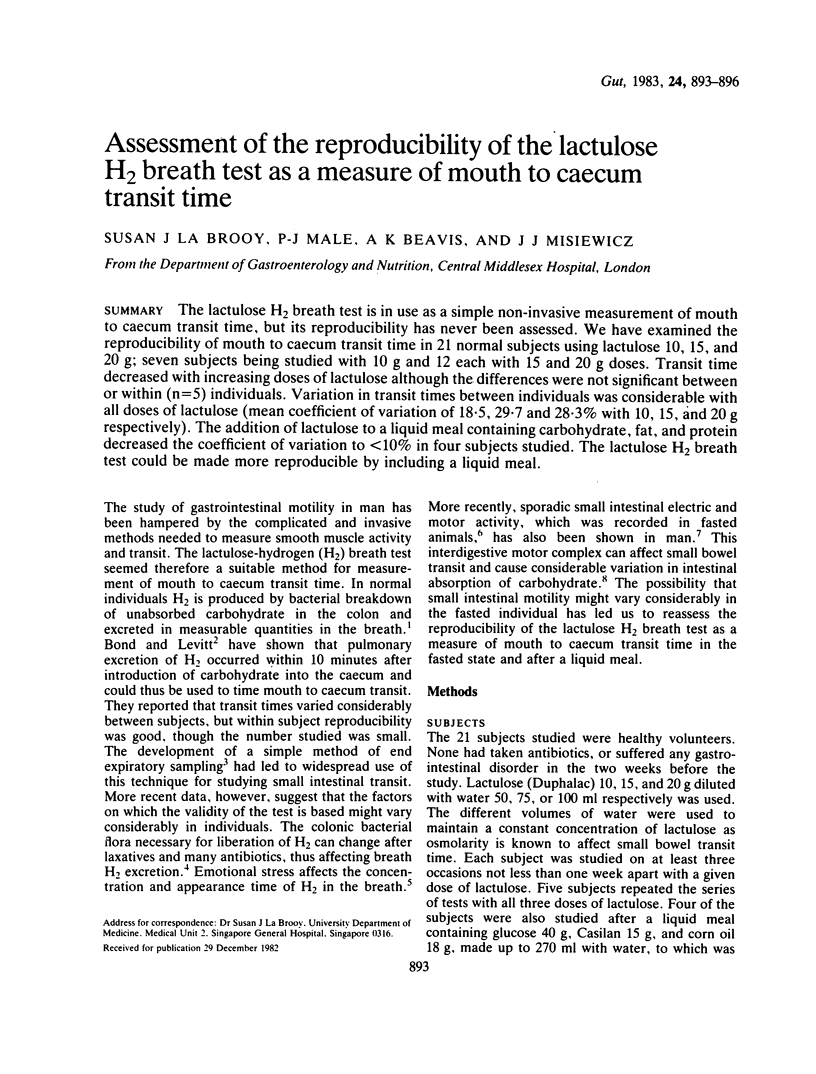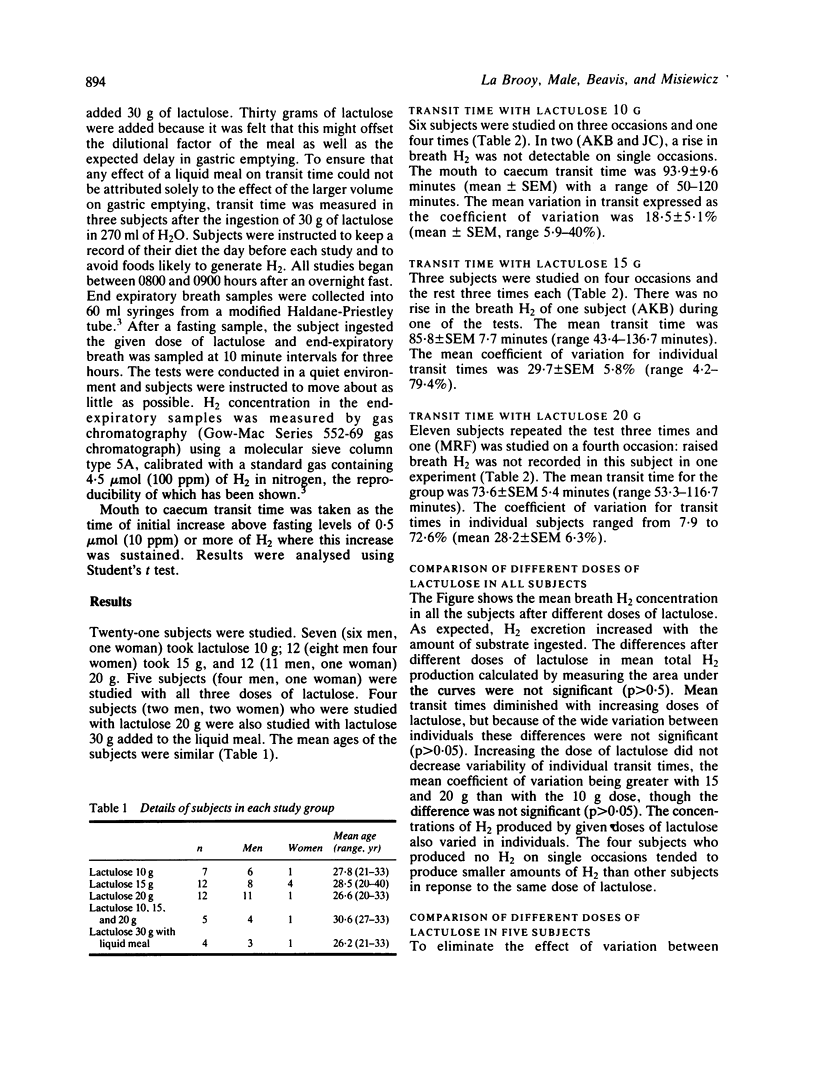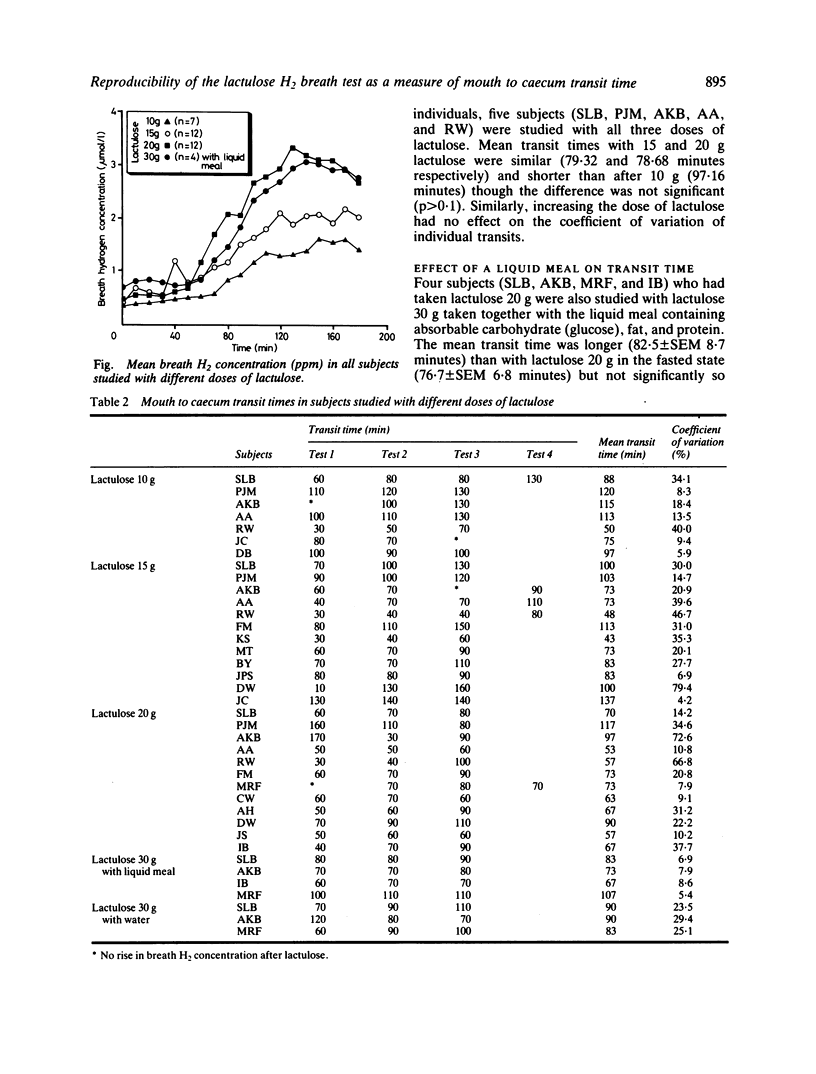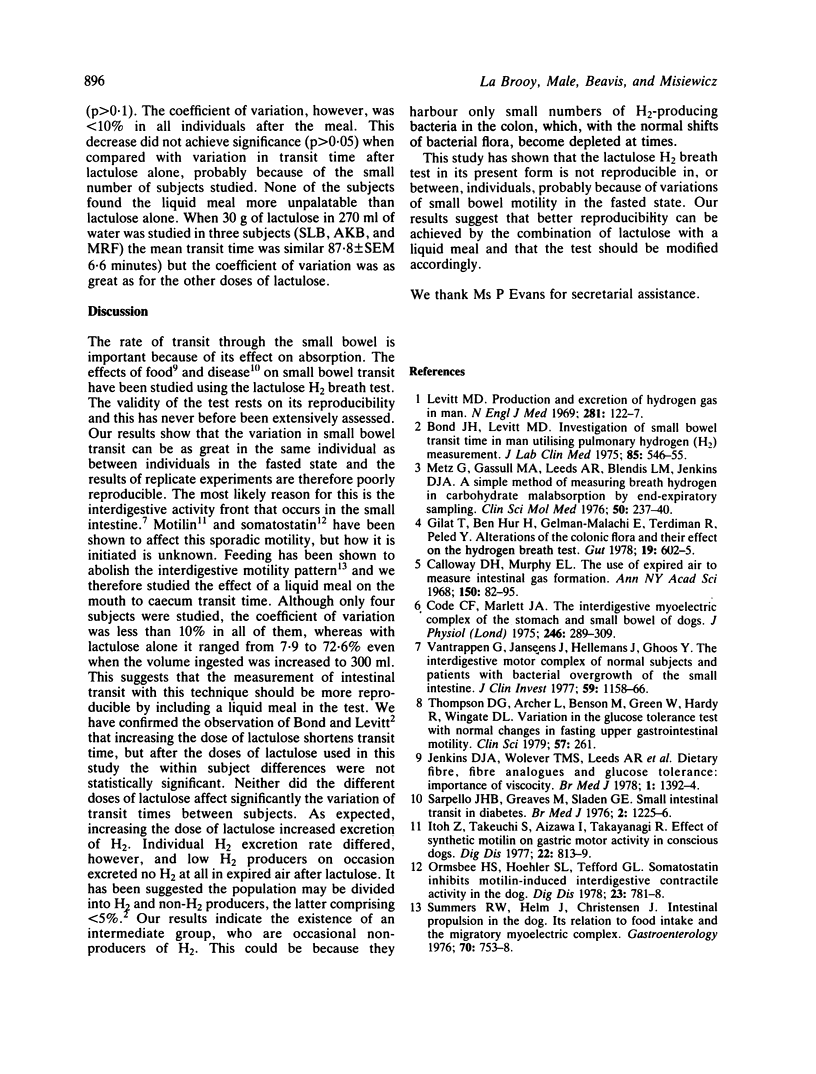Abstract
The lactulose H2 breath test is in use as a simple non-invasive measurement of mouth to caecum transit time, but its reproducibility has never been assessed. We have examined the reproducibility of mouth to caecum transit time in 21 normal subjects using lactulose 10, 15, and 20 g; seven subjects being studied with 10 g and 12 each with 15 and 20 g doses. Transit time decreased with increasing doses of lactulose although the differences were not significant between or within (n = 5) individuals. Variation in transit times between individuals was considerable with all doses of lactulose (mean coefficient of variation of 18.5, 29.7 and 28.3% with 10, 15, and 20 g respectively). The addition of lactulose to a liquid meal containing carbohydrate, fat, and protein decreased the coefficient of variation to less than 10% in four subjects studied. The lactulose H2 breath test could be made more reproducible by including a liquid meal.
Full text
PDF



Selected References
These references are in PubMed. This may not be the complete list of references from this article.
- Bond J. H., Jr, Levitt M. D., Prentiss R. Investigation of small bowel transit time in man utilizing pulmonary hydrogen (H2) measurements. J Lab Clin Med. 1975 Apr;85(4):546–555. [PubMed] [Google Scholar]
- Calloway D. H., Murphy E. L. The use of expired air to measure intestinal gas formation. Ann N Y Acad Sci. 1968 Feb 26;150(1):82–95. doi: 10.1111/j.1749-6632.1968.tb19034.x. [DOI] [PubMed] [Google Scholar]
- Code C. F., Marlett J. A. The interdigestive myo-electric complex of the stomach and small bowel of dogs. J Physiol. 1975 Mar;246(2):289–309. doi: 10.1113/jphysiol.1975.sp010891. [DOI] [PMC free article] [PubMed] [Google Scholar]
- Gilat T., Ben Hur H., Gelman-Malachi E., Terdiman R., Peled Y. Alterations of the colonic flora and their effect on the hydrogen breath test. Gut. 1978 Jul;19(7):602–605. doi: 10.1136/gut.19.7.602. [DOI] [PMC free article] [PubMed] [Google Scholar]
- Jenkins D. J., Wolever T. M., Leeds A. R., Gassull M. A., Haisman P., Dilawari J., Goff D. V., Metz G. L., Alberti K. G. Dietary fibres, fibre analogues, and glucose tolerance: importance of viscosity. Br Med J. 1978 May 27;1(6124):1392–1394. doi: 10.1136/bmj.1.6124.1392. [DOI] [PMC free article] [PubMed] [Google Scholar]
- Levitt M. D. Production and excretion of hydrogen gas in man. N Engl J Med. 1969 Jul 17;281(3):122–127. doi: 10.1056/NEJM196907172810303. [DOI] [PubMed] [Google Scholar]
- Metz G., Gassull M. A., Leeds A. R., Blendis L. M., Jenkins D. J. A simple method of measuring breath hydrogen in carbohydrate malabsorption by end-expiratory sampling. Clin Sci Mol Med. 1976 Mar;50(3):237–240. doi: 10.1042/cs0500237. [DOI] [PubMed] [Google Scholar]
- Ormsbee H. S., 3rd, Koehler S. L., Jr, Telford G. L. Somatostatin inhibits motilin-induced interdigestive contractile activity in the dog. Am J Dig Dis. 1978 Sep;23(9):781–788. doi: 10.1007/BF01079786. [DOI] [PubMed] [Google Scholar]
- Scarpello J. H., Greaves M., Sladen G. E. Small intestinal transit in diabetics. Br Med J. 1976 Nov 20;2(6046):1225–1226. doi: 10.1136/bmj.2.6046.1225. [DOI] [PMC free article] [PubMed] [Google Scholar]
- Summers R. W., Helm J., Christensen J. Intestinal propulsion in the dog. Its relation to food intake and the migratory myoelectric complex. Gastroenterology. 1976 May;70(5 PT1):753–758. [PubMed] [Google Scholar]
- Vantrappen G., Janssens J., Hellemans J., Ghoos Y. The interdigestive motor complex of normal subjects and patients with bacterial overgrowth of the small intestine. J Clin Invest. 1977 Jun;59(6):1158–1166. doi: 10.1172/JCI108740. [DOI] [PMC free article] [PubMed] [Google Scholar]


